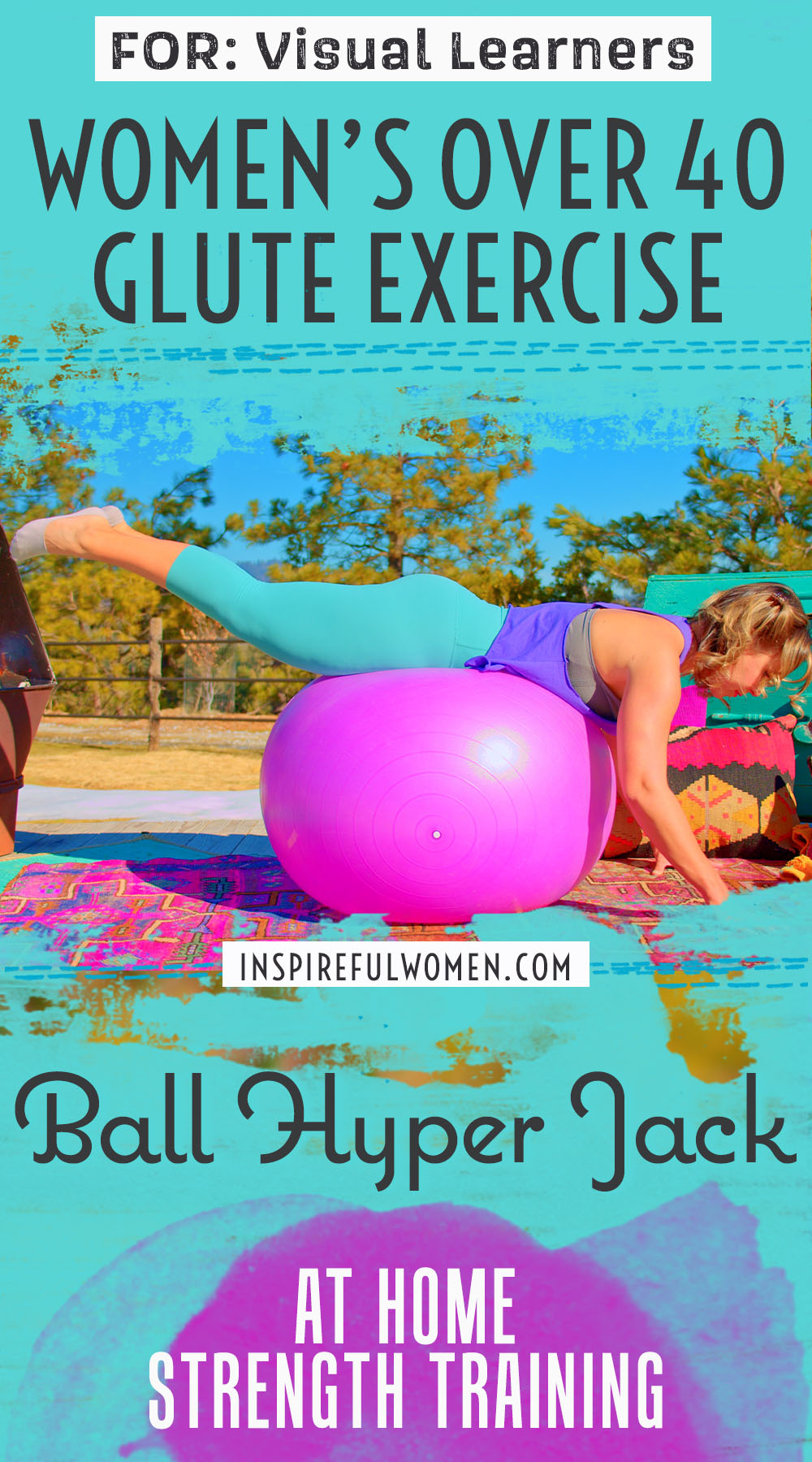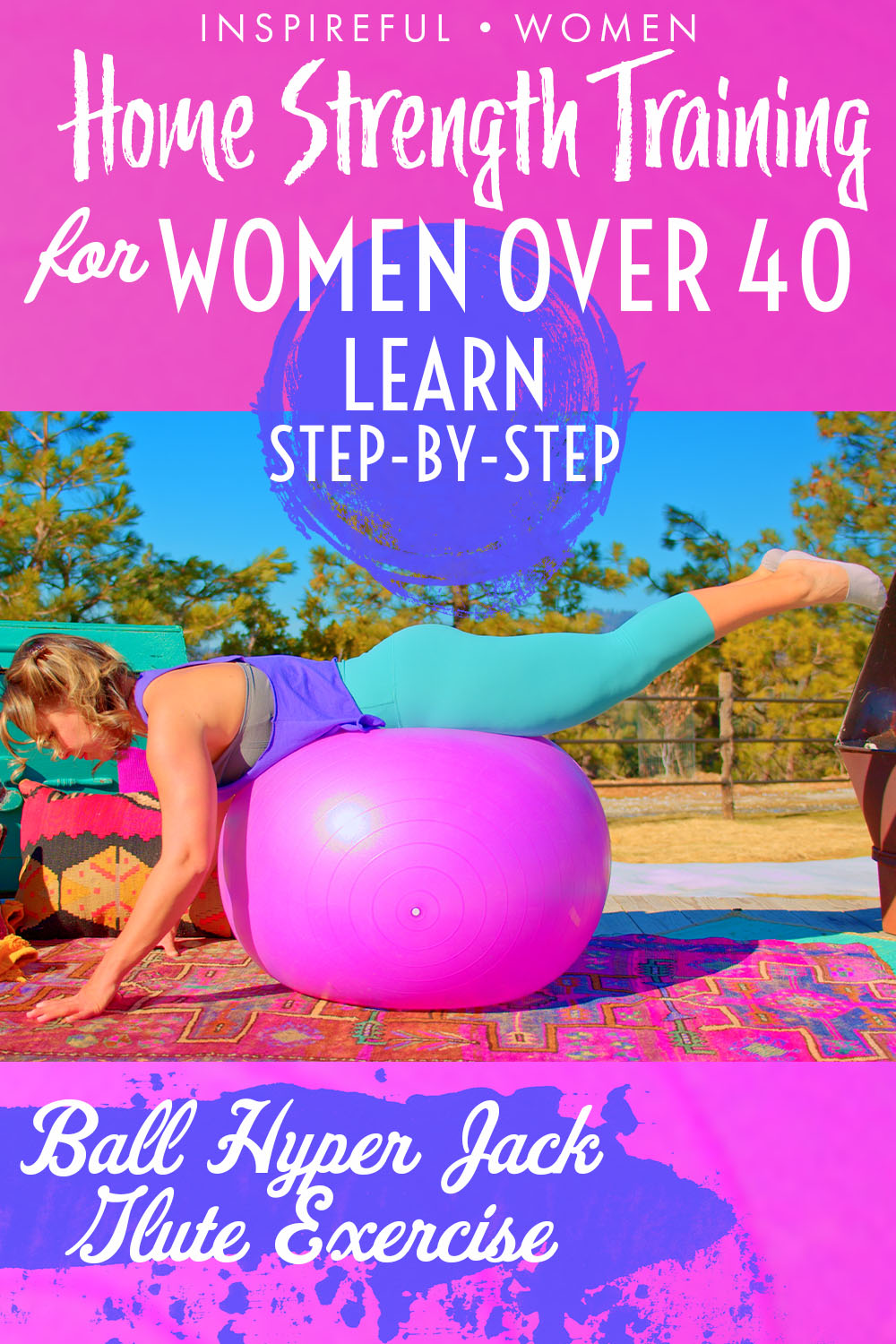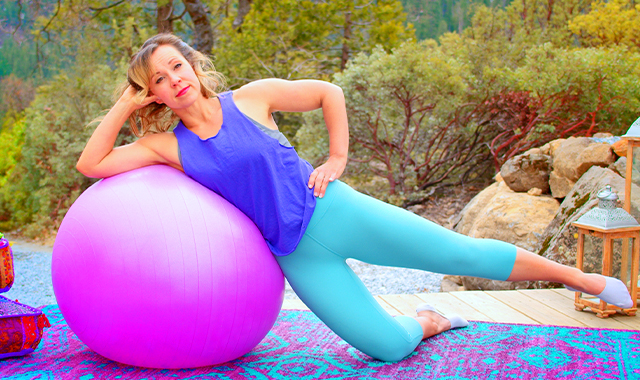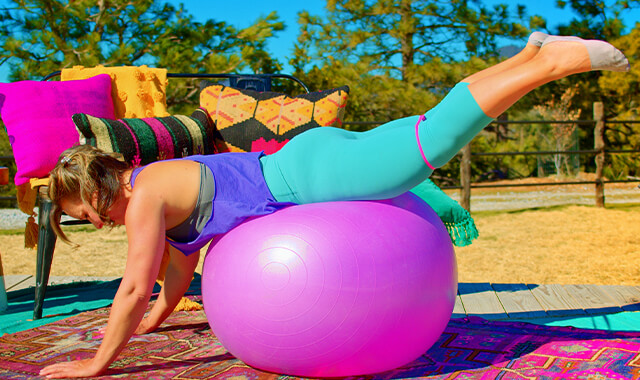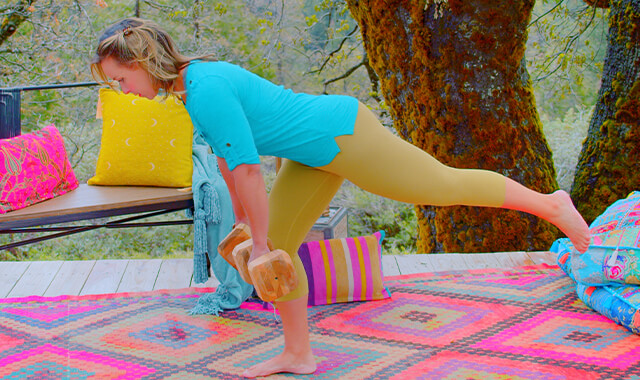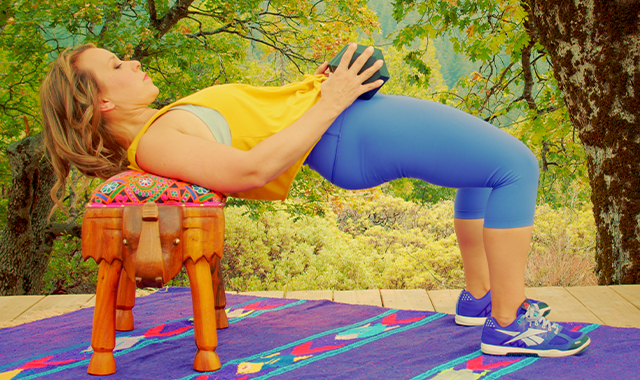Straight Leg Reverse Hyper - Hamstring & glute Exercise
How to Do The Straight Leg Reverse Hyperextension - Glute Isolation Exercise | In-Depth Guide [VISUAL LEARNERS] Intermediate
Proper Form, Common Mistakes, & Variations | Home Resistance Training
WHAT DO YOU WANT TO SEE?
QUICK DEMO
QUICK DEMO
MUSCLES THIS WORKS
MUSCLES
MAIN MUSCLES WORKED IN the Straight Leg Reverse Hyper Jack
Gluteus maximus
OTHER MUSCLES WORKED:
- Hamstrings
- Core stabilizers
WHAT WE'RE DOING TODAY
WHAT & WHY
BENEFITS OF TRAINING our Gluteus Maximus
WHAT
WHAT WE'RE DOING TODAY
ALL WE'RE DOING:
This is a must-watch video.
Stability Ball Reverse Hyper Jacks work our large glute muscle, the gluteus maximus, and our hamstrings & various muscles that stabilize our core will be helping out. This glute exercise combines elements of reverse hyperextension and jumping jack to provide a unique glute isolation workout.
ADDRESS MUSCLE IMBALANCE BETWEEN LEGS
Many of the glute targeting exercises are done lying on your back and using the gluteus maximus and hamstrings to lift the pelvis up. For example: bridges and hip thrusts. Both legs are working together to lift the weight up. It is pretty common to have one leg that is stronger than the other, and the stronger leg will try to do more of the work. If you continue to do exercises where one leg does more work than the other, the imbalance in strength will never be addressed. In the Reverse Hyper Jack movement, each leg works independently to lift itself up. This is an effective way to strengthen the legs equally. Each leg has to do its own work. Your left leg can’t “cover” for your right leg, etc. 😉
These are done lying over a stability ball to support your upper body. The arms are on the floor in front of the ball to help stabilize the body as the legs move. Both legs are lifted up and then moved out and in like a jumping jack. The glute & hamstrings will be lifting the legs up, & then holds the legs in the air as they open & close. The muscles are working to lift the weight of the leg against the downward pull of gravity. Moving the legs out will work the hip abductors (gluteus medius and minimis) and moving them back in again will work the adductors (adductor magnus, longus, brevis, pectineus and gracilis). These muscles are not working against any added resistance so they will not be working that hard. The core muscles are working to keep the pelvis nice and stable as the legs move.
WHY BOTHER DOING IT?
WHY
WHY DO WE EVEN CARE?
CHALLENGE TO THE CORE
Lifting both legs at the same time is also a really good workout for the core muscles. They have to work hard to hold the torso still against the weight of both legs.
TRAINING THE COORDINATION OF OUR MUSCLES (NOT JUST STRENGTH)
Movement is not just about muscle strength. It’s also about how muscles coordinate and work together to produce healthy, balanced movement.
Hip thrusts and bridges are done by lying on your back and lifting the hips up. The feet and the upper body are held stable by the floor or bench.
In the reverse Hyper Jack exercise, the foot and leg are free to move, and not only move up but out to the side and back in again. The muscles that surround the hip joint have to work together in coordination to control the movement of the weight of the entire leg. Moving the legs out to the sides adds another direction of movement to the exercise. The gluteus maximus and hamstrings have to stay active as the legs move out and in, this is a good way to train the muscles to do their job as the limb moves in other directions. It is always a good idea to work muscles in a variety of directions. It makes them more capable during daily life activities, for example, maintaining an upright posture as you move about, changing directions: walking on a crowded sidewalk, hiking, shoveling, and vacuuming.
I don’t know about you, but when I think about it, it’s often been the times when I had to move my body in an unplanned way, or not as often, I feel like I got close to hurting something (or did hurt something)- but training these muscles to move in all these various directions & angles can help them know what to expect in these scenarios & respond in a good way that doesn’t cause injury.
WORK ON TRUE HIP EXTENSION FOR HEALTHY HIP JOINTS
In many exercises that work the gluteus maximus the focus is on moving the hip from a bent position to being straight, for example, step-ups and lunges, and even bridges and hip thrusts. In all these cases our thigh ends up in a straight line with the front of our hip. Which is all well & good- but our leg can also go behind our body to some degree too! And the ability to do this is very important to the most basic activity we do every. Single. Day. Walking - when you take a step, your thigh stretches behind your body, right?
In this movement, the focus is on taking the leg back past the torso into true hip extension. We don’t have a lot of movement of the leg back behind the body, just about 15 degrees or a little more (that’s key - so don’t copy all those videos where the person’s leg is going way above their head- they are bending a lot at the spine in general to achieve that). This 15 degrees of hip extension just happens to be about the distance that your leg is behind you in the last part of your walking stride, when your weight is on your front foot and the back foot is still on the ground - how perfectly designed right?!
Interestingly, as people age, they tend to lose their ability to take their leg behind their body though. This is due to a loss of movement in the joint and strength. You may have noticed older people taking shorter steps when they walk. It takes more energy to walk this way, and we only have so much energy right? Good to conserve some of that and save it for the kids or grandkids. Getting a good amount of hip extension while we walk and do other things saves energy because it also utilizes propulsion to get us where we’re going. This exercise will help train that aspect of our glute muscle function.
Including exercises in your program that target the muscles that move the leg behind the body can help to prevent “walking like an old person”. It also will help to keep the hip joint healthy, which in turn protects the spine, knees, and feet from increased stresses and abnormal wear and tear.
FOCUS ON THE GLUTES FOR DECREASED STRAIN ON THE SPINE IN LIFE
With all that I’ve been learning the past couple of years, & then comparing that with how I actually move my body- whether during exercise or just stuff I’m doing in life like tiling a shower or moving some boxes to the shed, I realized that I was often using my back to do what I was doing, rather than my glutes & leg muscles. You too? It’s so easy to do!
A healthy gluteus maximus help keep the spine, pelvis, hips, and knees healthy. They work with all of the other muscles of the core and legs to keep the joints aligned and cushion the impact during walking, running, and jumping. Strong glutes and leg muscles can be used to do most of the work when lifting and moving heavy objects. This will decrease the stress on the spine and help to prevent damage and degenerative changes that occur with age. This exercise will help us to make that mental connection to our glute muscles & help us to use them rather than our back in these other daily activities.
EVERYDAY LIFE
EVERYDAY LIFE &
MUSCLE FUNCTION
HOW WE USE OUR Glutes MUSCLES IN EVERYDAY LIFE
1. THE GLUTEUS MAXIMUS MOVES THE THIGH BACK FROM A BENT (FLEXED) POSITION TO STRAIGHTEN THE HIP (HIP EXTENSION):
- Walking and running uphill
- Walking up an incline
- Moving from sitting to standing
- From a chair
- Out of a car
- Off of the toilet
- Going upstairs
- Getting up from squatting
- Lifting from the floor
- Getting up from the floor
- Standing up from a bent-over position
- Unloading a dishwasher/dryer
2. HOLDS THE BODY UPRIGHT
- Standing
3. RESTRAINING/BREAKING THE PULL OF GRAVITY ON THE UPPER BODY
- Leaning over - prevents the torso from being pulled down
STARTING POINTERS
Starting Pointers
I love this exercise! It’s just fun & unique and working our glutes in a more unusual way. This is a pretty simple movement, but you can really feel the muscles working because they are under some degree of tension throughout the set.
The lift and lowering part of the movement is not very big. Make sure to isolate the movement to the hip joint, focus on keeping the pelvis very still as the legs move up, out, in and down. The legs only lift and lower down a few inches. This prevents the low back from rounding and it will also keep the targeted muscles under tension for a longer period of time. This is a great way to challenge the muscles.
You may need to play around with your positioning on the ball. The exact position will be dependent on your body proportions and the size of the ball. The arms should be able to hold your body still as you move your legs.
HOW TO FEEL WHAT MUSCLE IS WORKING
How to Feel What Muscle is Working
Stand facing away from a wall. Bend your knee and place the bottom of one foot on the wall.
Place your hands on your buttocks - one on each side.
With the leg that is on the wall - push back into the wall. You should feel that side of the buttocks tighten up, while the other stays relaxed.
HOW TO DO THE EXERCISE
LOOKS
HOW Straight Leg Reverse Hyperjacks SHAPE OUR BODY
Shapes and tones buttocks.
PROPER FORM
PROPER FORM: Straight Leg Reverse Hyper Jack
EQUIPMENT, SETS & REPS
EQUIPMENT:
Stability ball
SUGGESTED STARTING WEIGHT FOR WOMEN:
None
SETS & REPS:
2-3 sets of 8 - 10 reps
PACE:
Slow and controlled
BODY POSITION
BODY POSITION FOR THE Straight Leg Reverse Hyper Jack
Kneel with the ball in front of you. Place your torso on the ball and push with your feet to roll over the ball so that your belly is on the ball. Hands on the floor.
HANDS: About 8 inches in front of the ball. Palms on the floor to stabilize your upper body, and there should be some weight on your hands to be able to easily lift the legs off of the floor.
LEGS: Legs straight out behind you with toes off of the floor. Your legs are close together but not touching.
BODY STANCE: Neutral throughout the exercise (this exercise works the muscles of your neck also so it is important to have the cervical spine in neutral). Space between your earlobes and tops of shoulders. Body lengthened from head to toes.
HOW TO DO
HOW TO DO Straight Leg Reverse Hyper Jacks
CUE: Concentrate on keeping your spine still and isolating the movement to your hip joints.
Keeping your legs straight, lift both legs up so that they are higher than parallel with the floor.
Without letting your back arch, hold at the top position.
Open your legs apart, like a jumping jack. Move them out to the side in your available range - when you meet resistance stop - there is no benefit to trying to move farther. Bring the legs back in.
Lower your legs down a few inches then lift up to begin the next rep.
NOTES: How to know how much to lower the legs & when to stop - We want to learn to know the difference between when our hips are creasing more and when our low back is bending to cause the lowering of the legs - our goal is to keep the lowering of the legs purely to the bending of the hips - there is a point where you can’t bend the hips anymore in this position and instead your low back will start to bend instead - I try to pay attention to at what point it felt like my low back was going to start moving - like trying to feel when I hit the “end” of my hips being able to flex. If you struggle with it, you can just focus on the bottom position being neutral (no hip crease) for each rep so that you are in a straight line from head to toe, and then when you contract the muscles you lift the legs from the hips just a little bit.
Per Carol: It is fine if the movement is from neutral to extension - a lot of it will depend on the size of their ball and the length of their torso/femur. I played around with the pure extension (from neutral) vs the few inches of flexion and I did like a little bit more movement but it is not better or worse - just different.
HOW TO SAFELY GET OUT OF THE EXERCISE
Roll back on the ball to lower your feet to the floor. Bend your knees and push off of the ball back into kneeling, step up to standing.
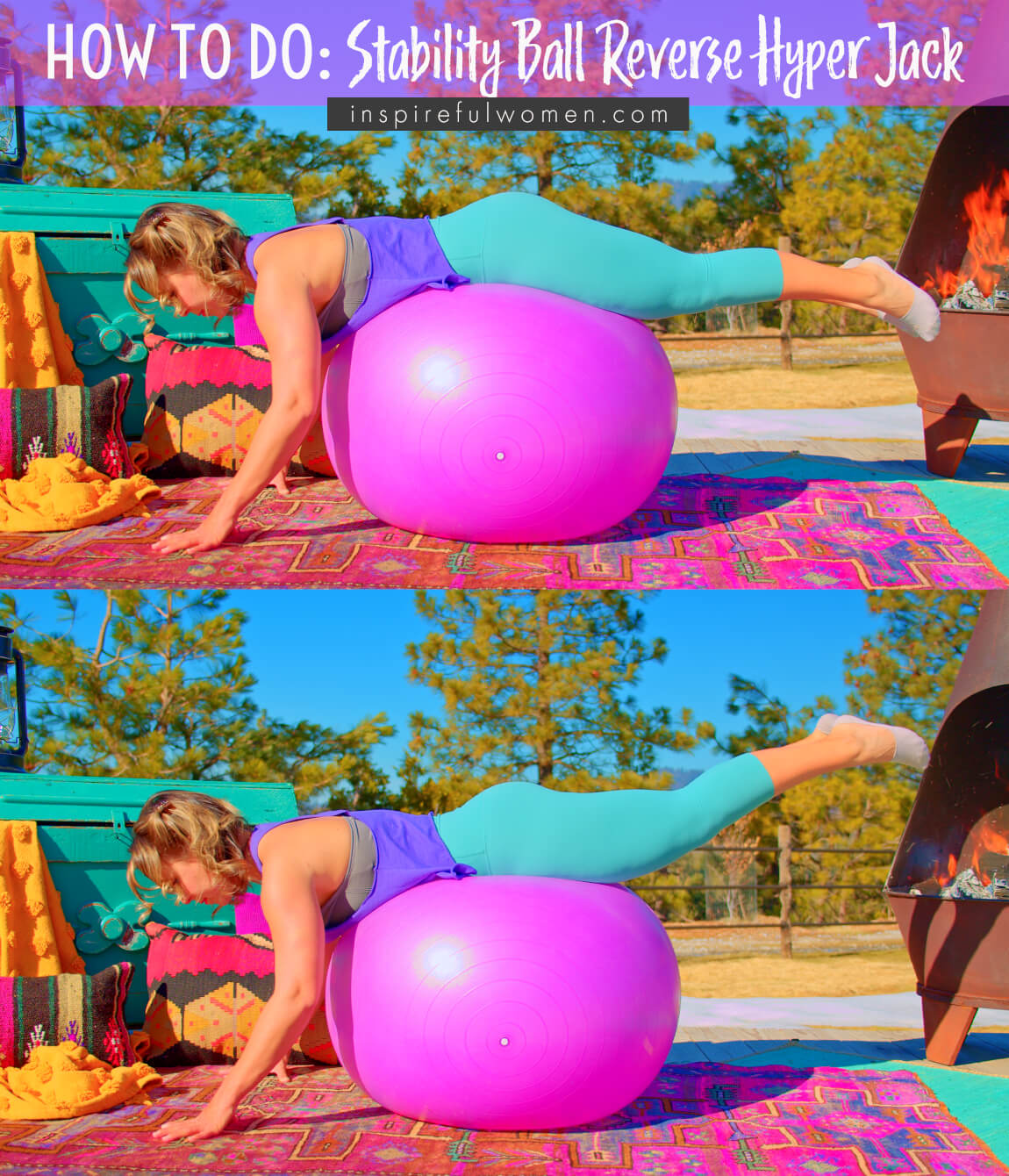
COMMON MISTAKES
COMMON MISTAKES
WHAT TO AVOID WITH THE Straight Leg Reverse Hyper Jack
KEY TIP:
Guess what? Good news! Many avoids are the same for most movements. Once you learn the basics, there's really only a few extra avoids for each individual movement.
1. Avoid Lifting Legs Too High Lumbar Extension
AVOID: Lifting the legs too high.
WHY NOT?
- This is the most common error.
- This movement is coming from the back instead of the hip, basically, the back is just collapsing and gravity is pulling it into an arch.
- This can irritate the small joints of the spine.
- This will decrease the muscle activity of the gluteus maximus and the core muscles.
WHAT TO DO:
- The legs only lift and lower down a few inches.
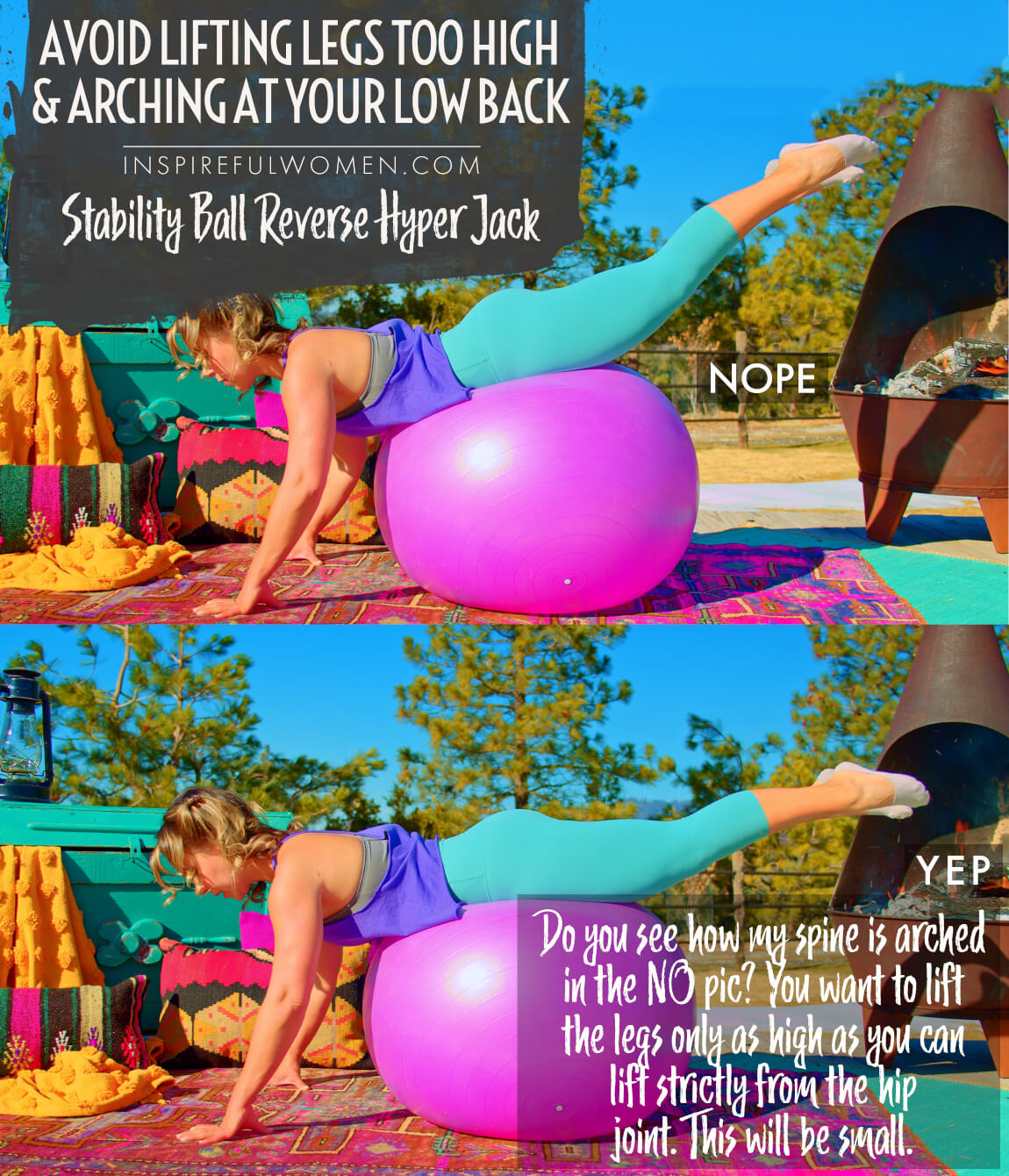
2. Avoid Moving Spine
AVOID: Moving the back or pelvis as you lift and lower the legs.
WHY NOT?
- This is a common error - mistaking back movement for leg movement.
- This can lead to irritation of the small joints of the pelvis and spine.
- This will decrease the muscle activity of the hip extensors.
WHAT TO DO:
- The goal of the exercise is to isolate the movement to the hip joint -moving the thigh bone forward and backward in the hip socket.

3. Avoid Lowering Legs To Ground
AVOID: Lowering the legs all the way to the ground.
WHY NOT?
- In most cases, this would require you to flex your spine to reach the ground which we are trying to avoid
WHAT TO DO:
- In most cases, this would require you to flex your spine to reach the ground which we are trying to avoid
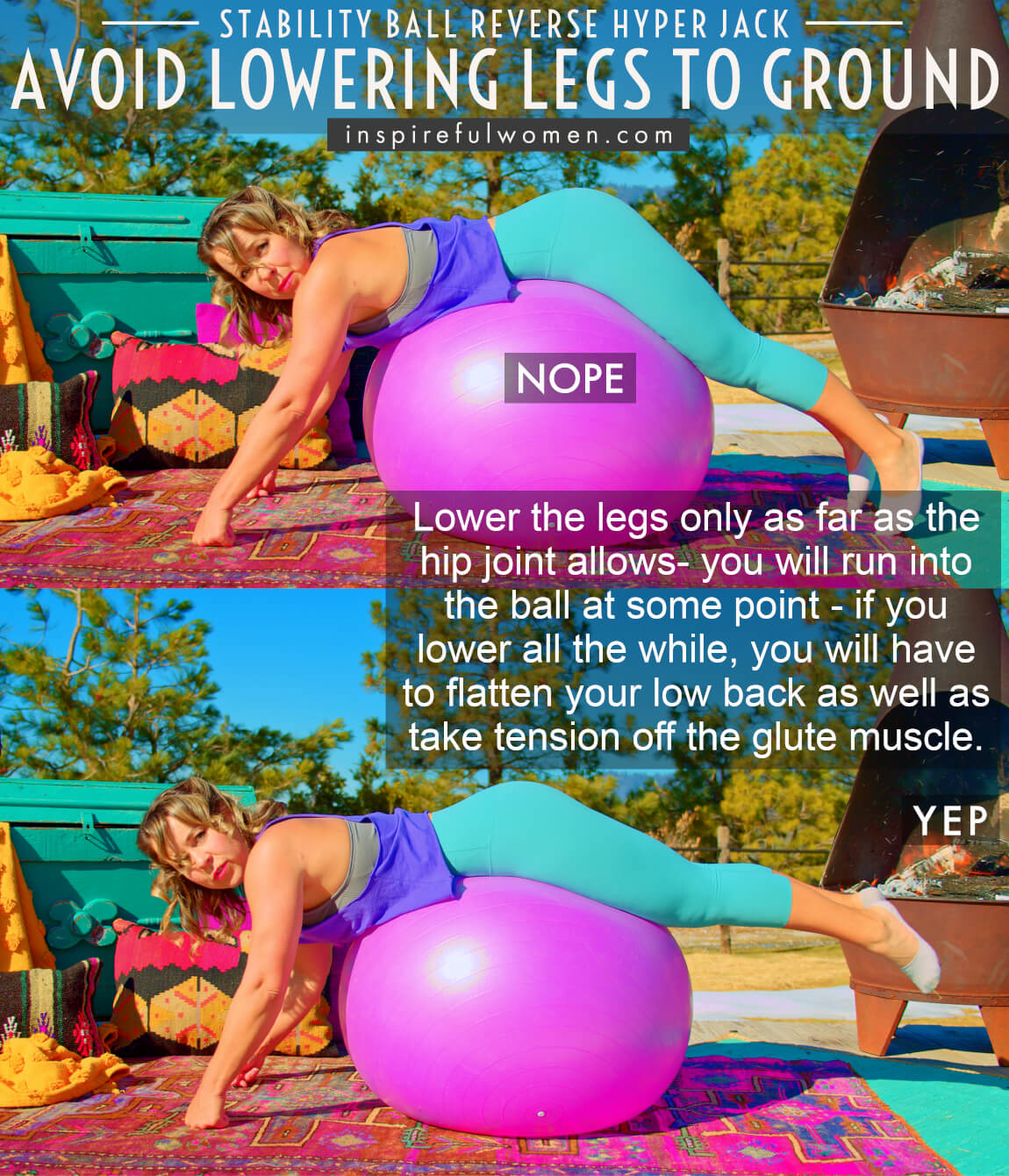
4. Avoid Too Much Weight In Hands
AVOID: Putting a lot of your weight on your arms
WHY NOT?
- This reduces the work the glutes have to do to lift the legs
WHAT TO DO:
- Use your hands to just balance yourself, not putting much weight on them at all. You can even balance with just your fingertips.

SCIENCY STUFF
SCIENCY STUFF
SPIFFILICIOUS FACTS ABOUT MUSCLES & MOVES
The gluteus maximus is a very large and powerful muscle. It lies over the back of the pelvis and attaches to the top of the femur. Its main functions are to pull the leg back behind you and to hold the trunk upright. When you are lying over the ball to work the muscle, it is very easy to let gravity do the work for you. By just collapsing the lower back, the legs will rise up. In fact, this compensatory pattern is very common in people with back pain. Instead of using the large gluteus maximus to pull the leg back, the low back just relaxes forward which results in the gluteus maximus relaxing and the ligaments of the spine doing the supporting. If you look around you will probably recognize people that you know standing this way - the hips are pushed forward, the shoulders are behind the hips.
One of the most common findings in patients with low back pain is the inability to activate their gluteus maximus - the cause and effect here is not really known. But, it is clear that it is essential to get the gluteus maximus working correctly in order to successfully treat low back pain.
ALL MUSCLES & WHEN
ALL MUSCLES WORKING & WHEN DURING THE Straight Leg Reverse Hyper Jack
Over the ball in the quadruped position: the extensor spinae, deep spinal extensors (semispinalis, multifidi, rotatores, interspinalis and intertransversarii), quadratus lumborum, and obliques contribute to holding the spine in neutral - at rest this is pretty minimal, but it increases as the legs are lifted.
The arm and shoulder blade muscles (deltoids, biceps, triceps, teres major, muscles of the forearm, scapular muscles, rotator cuff muscles latissimus dorsi) work to hold the upper body still.
The gluteus maximus and hamstrings work concentrically to lift the legs into extension. They work isometrically to hold the position as the gluteus minimus and medius contract concentrically to abduct the legs. The adductors magnus, brevis and longus, pectineus and gracilis contract concentrically to move the legs back in together. The amount of muscle activity of the abductors and adductors is pretty minimal because they are not moving against gravity. The gluteus maximus and hamstrings work eccentrically to control the movement as the legs lower back down a few inches.
PIN IT FOR LATER!
